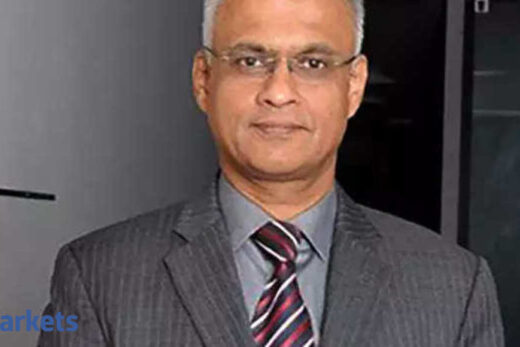Uday Kotak: All of us have been impressed by the government’s ability to work both at the big picture as well as focus on the details. That is something for which I will give a lot of credit to the finance ministry. You have laid out the roadmap and comforted us both on growth and areas like privatisation and disinvestment in the context of your Budget last year as we look at the balance part of this year. But we are on the verge of the 74th independence day. What would you like to see achieved on 75 years of independence next year?
If I can risk it, I will say Atmanirbhar Bharat. I did not use that word during my talk because many of the things that we are doing are aiming at achieving it and so there was not much of a point for me to say it. I thought I should lay down all the steps which I am taking towards being Atmanirbhar before you. Now that you asked me this question, I would actually want India to be Atmanirbhar on a few things like renewable energy so that our dependence on fossil fuel is brought to a minimum.
That is one thing on which I want the industry to be very proactive about and engage in such a way that you are able to partner yourself with people for renewable energy capacities within India. If you are able to bring down the dependence on fossil fuel and build capacities within India to build renewable energy and also manufacture those things which are required — be it films or solar panels. This will allow us to build capacities in renewable energy so that the dependence on fossil fuel is brought to a minimum. Therefore, when I say reliance on renewable energy, I mean we will have to produce those things which are raw materials for establishing renewable production, energy production places. We do not need to be big in renewable energy, but we shouldn’t have to depend on films and panels from outside.
Secondly, since we are leaders and should continue to be leaders in using technology, we need to have chip manufacturing coming into India. I would certainly want industry to understand this and make sure that by partnering with big ticket investors, we can bring in chip manufacturing capacity into India.
Thirdly, you are aware that the prime minister has announced a hydrogen mission and it is a long term investment. We need to understand the multifaceted capacity that a hydrogen mission can have. We need to have capacities built in India and therefore I am laying a lot of stress on Atmanirbharta in the energy sector. If we are able to climb on to that bus, many things will be addressed in India. Otherwise, we will pay through our nose for fossil fuel which in turn affects our environment and we are paying for it but affecting ourselves and affecting our economy and the environment. So that is one thing which I would lay emphasis on.
Sanjiv Bajaj: Last year, huge support came from the government on the fiscal and monetary side. Many countries around the world did the same. Now the US, with its high levels of vaccination penetration and high growth of the economy already being apparent, has started talking about the sun setting on the excess liquidity. How do you see this going for us? Would it be fair to expect continued support going into next year? We have not reached that level yet.
Nirmala Sitharaman: Yes, absolutely. I do not think we have reached that level and I am glad that the RBI has been voicing that understanding that too quick retrieval or sucking out of the liquidity from the economy may not do the necessary stimulus which is required. I am glad that the RBI has kept that understanding and they have not given any indication about wanting to suck out the liquidity which is available there.
Rishad Premji: I have two specific questions on behalf of the IT industry; the first is on promoting R&D and innovation. As you are aware, many advanced countries have mechanisms through matching grants and incentives to promote innovation across industries in advanced technologies. Is there any thinking to encourage research in emerging technologies on similar lines? The second question is on tax. As you may be aware, there are many open tax issues which are repetitive in nature and have been lingering for the IT industry over the last 20 years. In 2013 there was an attempt made through the Rangachary committee to address some of these issues but they still remain unresolved. Would you be open to an idea of setting up a committee under the CBDT like a mediation committee to try and address some of these long pending litigation issues?
Nirmala Sitharaman: Your second question first; let me have from you a list of all those issues which you think are lingering still post the committee which was set up in 2013. I am not for a moment denying that whatever you are saying are probably lingering but I would want to get an idea of what are those issues which you want to list out and say that this has never been addressed since 2013. I would like to see them. Once I see them, I will be able to take a call whether I need a committee for it or is there a way in which I can have the present board and address those issues because a committee after all has gone through it in 2013. If there are no issues but the old ones remain pending, I do not need another committee to sit over it, I just need to give decisions.
So let me have a list from you, please. As regards the R&D for services sector and largely when you talk of services you are talking of IT, I am not sure I will be the person to speak about what specific R&D that you are referring to or I may want to refer to. I would want to have the MeitY, the Ministry of Electronics and IT to be able to tell me about it and also industry to be more specific in saying what is it that you want now.
If you need help, we need to extend the help but since after the STPI and everything, India showed brilliant success in setting up large ecosystems for IT industry and different layers have happened from the backroom BPOs to providing project based solutions to moving further today now reaching a stage with R&D.
I want to understand what is the nature of support you expect from the government because the industry once it reaches a certain level, determines its contours like bio pharma today. Bengaluru is a big centre. You are familiar with it and the bio biosimilars that they are doing. They are doing a lot of work on their own but of course the kind of support which they require from us is fairly well defined and therefore it is possible for us to quickly ramp up and respond. So please write to me, please send me something more specific, let me respond.



